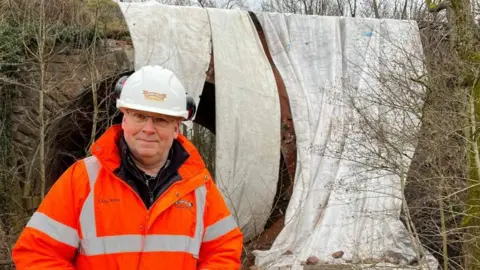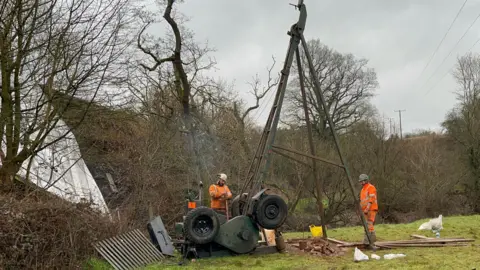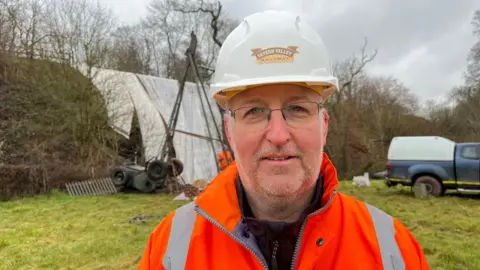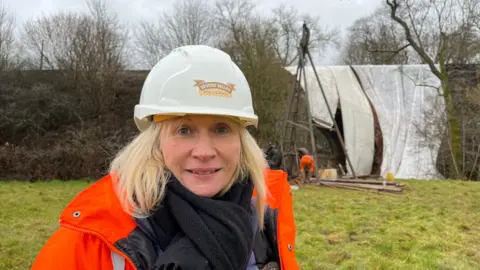Work begins to find cause of railway landslip
 BBC
BBCEngineering works have begun to determine the cause of a landslip that left four miles of heritage railway closed.
On 30 January, part of a bridge on the Severn Valley Railway (SVR) in Shropshire collapsed, leaving hundreds of tonnes of rubble.
Workers are now digging boreholes into the surrounding land to understand why it happened.
Chris Bond, the railway company's head of infrastructure, said the track had been left "hanging in the air".
The heritage railway runs for 16 miles (28km) from Kidderminster, Worcestershire, to Bridgnorth, Shropshire.
The landslip led to the collapse of one of the wing walls that holds up the bridge over the Mor Brook, a tributary of the River Severn.
Mr Bond said there had been a "failure of the wing wall of the bridge", which caused hundreds of tonnes of rubble and earth to tumble down.
"It's left the track hanging in the air and therefore unpassable for any trains," he said.
Boreholes are being dug to analyse the state of the land nearby.
"They're basically hammering a hollow tube into the ground and pulling up cores," Mr Bond said.
"It's important information that our structural engineers will use to determine the type of engineering solution."

Gus Dunster, SVR managing director, described the public response to the landslip as "amazing."
He said the company had not launched a fundraising campaign, but donations had poured in to repair the damage.
"We've received over £50,000 already, which is just staggering. It reminds us just how well thought of this railway is by so many people."
SVR told the BBC that it had now raised more than £65,000.

The landslip happened just outside the village of Eardington, on a popular part of the rail line that carries tourists to and from Bridgnorth.
Lesley Carr, head of communications at SVR, said it had "sent a shockwave" through the local community.
Ms Carr said she had heard from business owners in Bridgnorth who were worried that trade could be impacted by a lack of passengers.
"This is something awful that's occurred - and they want the full railway back up and running; that's what we all want," she said.

Ms Carr added that the railway was "welcoming donations, however big or small", and emphasised that the remaining 12 miles of the line was still open for visitors.
"Come and see us; that's another way of supporting us," she said.
Follow BBC Shropshire on BBC Sounds, Facebook, X and Instagram.
